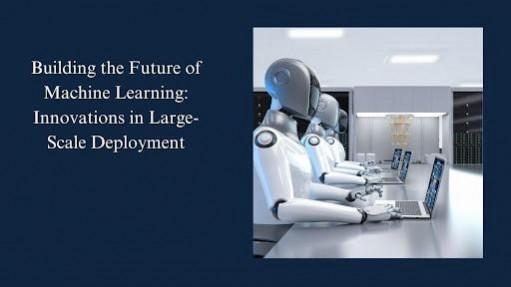
In an era where artificial intelligence (AI) is reshaping industries, the challenge of deploying machine learning (ML) at scale has taken center stage. Chirag Maheshwari, a researcher specializing in ML infrastructure, explores the technological advancements that enable organizations to develop, maintain, and optimize production-scale ML systems. His insights shed light on the evolving landscape of computing infrastructure, data pipelines, model training, and operationalization, offering a blueprint for enterprises striving for efficiency and scalability.
The Backbone of Machine Learning: Computing Infrastructure
The backbone of any large-scale machine learning (ML) system is its computing infrastructure, which dictates performance, scalability, and cost efficiency. Organizations must decide between on-premises high-performance computing (HPC) clusters with GPU acceleration, which offer control and low-latency processing, or cloud-based architectures, which provide unmatched flexibility, scalability, and cost-effectiveness. Cloud platforms revolutionize ML infrastructure with containerization, automated scaling, and microservices, enabling dynamic resource allocation, seamless model deployment, and efficient parallel processing, ultimately accelerating AI-driven innovation and operational agility.
Data Pipelines: Ensuring Quality and Scalability
Machine learning (ML) models rely heavily on high-quality data, making robust data pipeline architectures crucial for accurate and efficient processing. Modern pipelines support batch and real-time data ingestion, integrating validation, governance, and lineage tracking to ensure data integrity and compliance. Advances in feature stores have transformed ML workflows by centralizing and standardizing features across projects, enabling consistency between training and inference. These innovations streamline feature reuse, reduce redundancy, and enhance model performance, ultimately accelerating AI-driven decision-making and deployment.
Training at Scale: Distributed Learning and AutoML
The rapid expansion of deep learning applications has driven the evolution of distributed training frameworks that maximize computational efficiency across multiple nodes. Key strategies like data parallelism, which distributes data batches across GPUs, and model parallelism, which splits large models across devices, enable faster and more scalable training. Automated Machine Learning (AutoML) has also revolutionized model development by automating critical tasks such as feature selection, hyperparameter tuning, and neural architecture search. This automation reduces reliance on manual intervention, accelerates experimentation, and democratizes AI, making advanced ML accessible to non-experts.
MLOps: Operationalizing Machine Learning
To streamline the transition from model development to production, enterprises are embracing MLOps (Machine Learning Operations) frameworks, which integrate DevOps principles into ML workflows. These frameworks incorporate continuous integration, automated testing, and real-time model monitoring to ensure sustained accuracy, reliability, and scalability. Infrastructure as Code (IaC) enhances this process by automating model deployment, minimizing configuration errors, and maintaining consistency across cloud and on-premises environments. Organizations adopting MLOps and IaC can accelerate deployment cycles, improve reproducibility, and ensure efficient model governance in dynamic, data-driven ecosystems.
Containerization and Orchestration: Simplifying Deployment
Container technologies have transformed ML deployment by standardizing environments and improving portability. Container orchestration platforms provide automated scaling, load balancing, and fault tolerance, ensuring that ML workloads remain efficient under dynamic conditions. These technologies enhance reproducibility, reduce downtime, and streamline the deployment process for ML models.
Monitoring and Observability: Maintaining Model Performance
With ML models operating in live environments, continuous model monitoring is crucial for tracking performance metrics, detecting data drift, and identifying anomalies. Advanced observability tools, including log aggregation and distributed tracing, offer deep insights into system behavior, allowing organizations to address issues and optimize performance proactively.
In conclusion, as organizations integrate machine learning into their core operations, the demand for scalable, efficient, and resilient ML systems has never been greater. Enterprises can develop robust ML ecosystems that fuel business growth and operational excellence by harnessing cutting-edge innovations in computing infrastructure, data pipelines, model training, and MLOps. Chirag Maheshwari offers a compelling roadmap for navigating the complexities of large-scale ML deployment, ensuring that organizations stay at the forefront of AI-driven transformation.

















